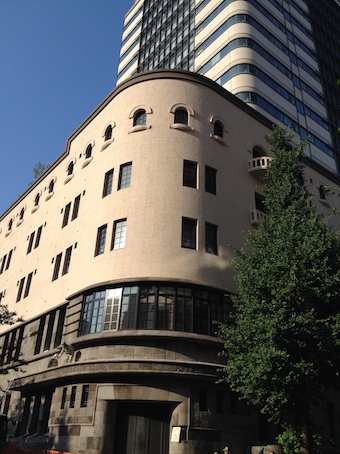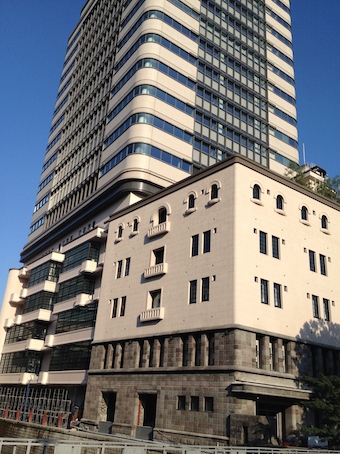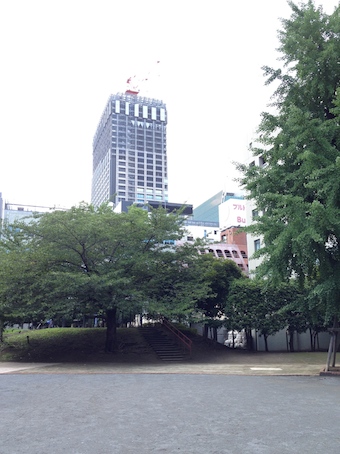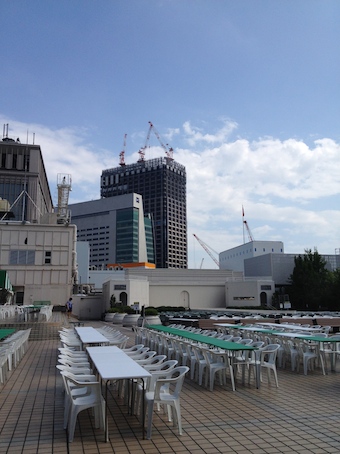List of Authors
>>About this blog
Recent blog post
|
[Yotaro]
July 31, 2014 09:00
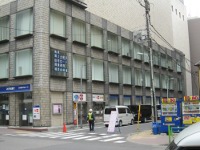 "Tsuyu no Satosaki" is the title of a novel that reminds me of this time. The author is Kafu Nagai (1879-1959). Kafu says, "The title of the novel is too elaborate, it doesn't matter if it's too elaborate," but it's exactly a wonderful title. (Masashi Sada has a song with the same name, but the title of this novel may have been in my head.) "Tsuyu no Satosaki" is the title of a novel that reminds me of this time. The author is Kafu Nagai (1879-1959). Kafu says, "The title of the novel is too elaborate, it doesn't matter if it's too elaborate," but it's exactly a wonderful title. (Masashi Sada has a song with the same name, but the title of this novel may have been in my head.)
In 1959, Kafu celebrated at his home in Ichikawa, and this year 55 years, this year's 55 years, the novel "Sumida River", "Sumitomo 1959" in the book "Hiyowa Geta" diary "Syotei Nijo", etc. In recent years, the number of female readers who were previously said to be empty has increased, and this is the end of Dokei.
By the way, speaking of Kafu's homes, "Shikikan" inbei-cho, Azabu-shi, "Shokutei" in Ushigome Yochomachi (behind the prison station"), and the birthplace of Koishikawa Kintomi-cho ("Fox") are famous. However, we seem to have a short period of time in Chuo-ku, but it seems to have a lot of Tsukiji neighborhood.
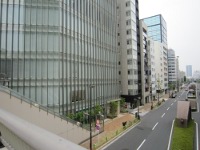 In May 1915 (1915), Kafu moved from his late father's house in Yochomachi to a rented house at 1-6 Tsukiji, Kyobashi-ku (currently 2-7 Tsukiji). The second floor was 10 tatami mats and 6 tatami mats, the lower floor was 8 tatami mats, 6 tatami mats, and 3 tatami mats. The rent was 26 yen, and there was a residence of Kiyoharu's teacher Umekichi next to the back. In September of the same year, he moved to her in 9-chome, Sojuro-cho (currently Ginza 7-5) to live again with the divorced geisha Yaeji (later Seiju Fujikage). In May 1915 (1915), Kafu moved from his late father's house in Yochomachi to a rented house at 1-6 Tsukiji, Kyobashi-ku (currently 2-7 Tsukiji). The second floor was 10 tatami mats and 6 tatami mats, the lower floor was 8 tatami mats, 6 tatami mats, and 3 tatami mats. The rent was 26 yen, and there was a residence of Kiyoharu's teacher Umekichi next to the back. In September of the same year, he moved to her in 9-chome, Sojuro-cho (currently Ginza 7-5) to live again with the divorced geisha Yaeji (later Seiju Fujikage).
Next, in September 1917 (1917), he moved from a house in Yochomachi to an alley in Kibikicho 9-chome (currently Ginza 7-chome 15-18) near Izumo Bridge and a second-floor house with lattice doors. It is named "Muyoan". The reason for the rented house was that Dr. Oishi of Nakasu Hospital was easy to receive a home call in case of emergency. At this time, "Shokutei Nijo" began, and it is written until the day before death.
At the end of 1918 (1918), Kafu sold the old house in Yochomachi for a total of 26,264.22 yen, and sold a house behind the alley at Tsukiji 2-300 Tsukiji behind Tsukiji Honganji (currently 3-chome 10, 11) for 2,500 yen and move. It's almost a year and a half. In May 1920,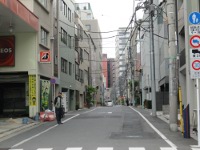 a new house "Shikikan" was completed on a leased land on a cliff at 1-6,beicho, Azabu-shi, and will leave Tsukiji. a new house "Shikikan" was completed on a leased land on a cliff at 1-6,beicho, Azabu-shi, and will leave Tsukiji.
Kafu loved the taste and emotion of the downtown area, but when I actually lived, I couldn't withstand the human relationships that were too close, the busyness behind the alley, and the badtaro of the noisy town, and returned to `` a mountainside with lots of trees '' I went.
It is extremely difficult to remember the appearance of the time when you heard the sound of the shamisen, a bustling city as you know, but once by all means for Kafu fans, Kabuki sightseeing, Tsukiji gourmet walk, etc. Please try. The annual Tsukiji Honganji Noryo Bon Dance Festival will be held until August 2nd. Here, there is a famous store in Tsukiji, which is said to be "the best Bon Odori in Japan". It's a good idea to take a walk in the neighborhood where the great walker Kafu lived before seeing it.
[On the photo] The area around 1-6 Tsukiji 1-chome
[In the photo] From the ruins of Izumo Bridge, you can see the old Kibikicho 9-chome
[Lower photo] Former 2-30 Tsukiji 2-chome
[Shitamachi Tom]
July 29, 2014 09:00
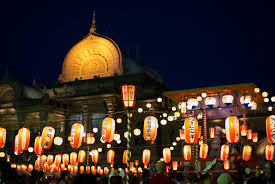 The annual Bon Dance Festival of [Tsukiji Honganji] will be held grandly for four days from July 30 (Wed) to August 2 (Sat). The number of visitors has increased every year, and now not only the neighbors but also the number of people coming from quite a distance has increased. The annual Bon Dance Festival of [Tsukiji Honganji] will be held grandly for four days from July 30 (Wed) to August 2 (Sat). The number of visitors has increased every year, and now not only the neighbors but also the number of people coming from quite a distance has increased.
Above all, the feature of this Bon Odori is that it is lively and lively. Even if you are good at business trip sales and dancing at a famous local Tsukiji store, you will feel fun. On the 1st (Fri), there is also a setting called "masquerade dance", and it is also interesting to see dancing in elaborate costumes.
 Naturally, it is the precincts of the temple, so I think that the strict feeling of the memorial service of the ancestors, which is the original purpose of Bon Odori, is maintained firmly. I have to feel some humble attitude of the people who gather. Naturally, it is the precincts of the temple, so I think that the strict feeling of the memorial service of the ancestors, which is the original purpose of Bon Odori, is maintained firmly. I have to feel some humble attitude of the people who gather.
In the first place, Bon Odori has been held all over the country about a thousand years ago as an event of the Buddhist Yelan Bon Festival. Unlike now, I think this event was rooted in the hearts of the Japanese people in an era where we had to entrust the end of life and death to nature and fate, and how much we missed the local events. .
The town of Tsukiji has been developed as the temple town of Honganji. Therefore, I may have a deep feeling of thinking about this traditional event in history.
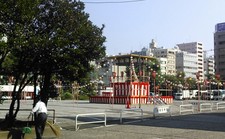 By the way, when I visited the precincts just before the weekend, the people involved were struggling to prepare. The turret stands up and waits for the day steadily. By the way, when I visited the precincts just before the weekend, the people involved were struggling to prepare. The turret stands up and waits for the day steadily.
Please come to this wonderful Bon Dance Festival! Your heart will be washed.
[Mr.Chuo-ku]
July 23, 2014 09:00
I think many people have seen unique advertisements appearing on the wall of Sony Building (Sony Building) at the corner of Ginza Sukiyabashi intersection in Chuo-ku.
An example of an advertisement (click on an image to enlarge)↓
 
Giant 3D lotion bottle (POLA) "Huge sphygmomanometer" The blood pressure value is displayed in the air.
 
Toyota's IQ aerial dance performance Jeans aerial spot sale report
 
Aerial fashion show "Amazing Spiderman 2" decorative unveiling ceremony
This advertisement has a history, and in December 1957, a neon advertising tower was installed at its current location. In 1957, two years after the launch of the transistor radio, the first neon advertising sign using a bean ball at that time became a hot topic.
History of Sony Building:
December 1957 Sony appeared in Sukiyabashi, Ginza.
June 1959 Showroom Opened
Construction of Sony Building started in June 1964
April 1966 Sony Building Opened
I think it would be nice to see this advertisement when you go to Ginza for sightseeing etc.
Sony Building History/Architecture Official Website
http://www.sonybuilding.jp/history/
[whatever]
July 17, 2014 09:00
Since the beginning of the 2000s, the redevelopment of the Nihonbashi area has been remarkable. "Cored Muromachi 2" and "Cored Muromachi 3" opened in March this year, a new place in memory. With this as a border, there are many sightseeing people who seem to be in their 20s, which have rarely been seen in this area until now, regardless of weekdays and weekends. It's a great shock.  When the Tokyu Department Store Nihonbashi store closed in 1999 and opened on the site in 2004, Nihonbashi Mitsui Tower in 2005, and YUITO and Cored Muromachi in 2010, were there so many visitors?
I felt somewhat lonely that the long-established stores in the neighborhood would fit into a part of skyscrapers one after another, but that's also the "era". Since I was a part-time job as a student and even after I became a member of society, I had quite a few opportunities to get involved in Chuo-ku and this Nihonbashi area, so I am very impressed with the changes in the city.
And development is still ongoing. The "Edobashi Warehouse Building" of Mitsubishi Warehouse Co., Ltd. near Edobashi, which was featured on this blog and TV, seems to be completed soon. About a week ago, I passed nearby, but the curing sheet like that projection mapping was almost removed! It seems to be completed in August, one month later. The outer walls of the 1st to 5th floors are preserved and are almost old.
Some of the curing sheets remained.
***
This is the building that has recently begun to show the whole picture of Nyokinoki. It's across the street from Choredo Nihonbashi, Eitai-dori St. It seems that the completion is still ahead, but this seems to be a large office building. There was a paper "habara" that was open in a nearby building.
Above: Photographed from Sakamotocho Park in Nihonbashikabutocho
Below: Photographed from the roof of Nihonbashi Mitsukoshi Main Building
***
It seems that the development of the long-established stores such as Yamamotoyama and Takashimaya along Chuo-dori has also begun. The scenery will change again in less than half a year or a year.
March 2004 Cored Nihonbashi (Nihonbashi 1-chome Building, 121m above ground level)
November 2005 Nihonbashi Mitsui Tower (195m)
October 2010 YUITO (Nihonbashi Muromachi Nomura Building, 108.55m)
October 2010 Coredo Muromachi (Muromachi Higashi Mitsui Building 104.99m)
March, 2014 Coredo Muromachi 2 (Muromachi Furukawa Mitsui Building 116.05m)
March, 2014 Coredo Muromachi 3 (Muromachi Chibagin Mitsui Building 80m)
[Akira Makibuchi / Sharakusai]
July 16, 2014 08:55
There is a small shrine on the south side of Sakuragawa Park. "Mushiba Prayer Stone" is erected on the grounds where the banner of Iriichi Jizo Bodhisattva stands (pictured). This area is the east side of Minamizume, where the Hatchobori of Horiwari (Sakuragawa after the Meiji era), which was excavated in the early Edo period, flows to the north, and was once called Minami Hatchobori. "Iriichi" is Jizo-son named after Irifune-cho 1-chome.
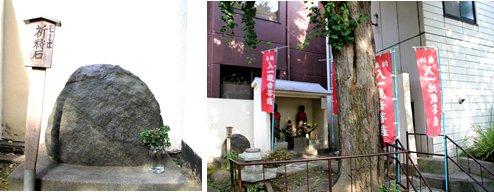
This "Mushiba (decay) prayer stone" has such a record.
"The stone which was buried in the stone, which is now buried in the side of Michibata, Minami Hatchobori 2-chome, Kyobashi-ku, there is a natural stone called oil stone with a height of more than three feet, and before the surface was very slippery, but a few years ago it was burned. (Tokyo Asahi Shimbun, December 15, 1907, 1907)
"Wishing" and "magic" that you want to rely on even today, even though you know it was superstition, were accepted by the common people as an act of folk religion during the Edo period. There are several traditions in Chuo-ku, but this prayer stone that remains in shape is rare and can be said to be valuable folk relics. @ Akira Makibuchi
[Sam]
July 15, 2014 09:00
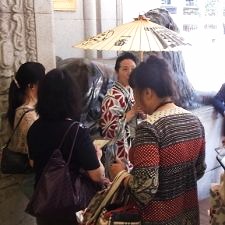 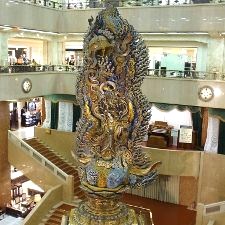
The noren of Echigo-ya is drawn on Hiroshige Utagawa's "Hundred Views of Edo Surugacho", and the current building completed in 1935 is Nihonbashi Mitsukoshi Main Store, which conveys the dignity of Renaissance architecture.
(In 1999, selected as the Tokyo Metropolitan Government Historic buildings)
The second Saturday of every month (11: 30-, 14: 30-) “In-store Guided Tour” is held, but this time we will introduce the state of July 12 (11: 30-).
The tour takes about 70 minutes, and the tour course includes a lion statue (1)-Mitsukoshimae Subway Station <designed at the time of opening> (2)-"Kidai Shoran" reproduction (3)-Seismic isolation device-marble wall fossil <ammonite (4)-Belem Night>-Tenjo Statue & Pipe Organ (5)-Ceiling decoration (6 Kimono Sales floor (7 Cafe & Cafe No.
We will listen to the guide in the earphone guide and go around the tour points while referring to historical images on the rented tablet.
① ② ③ ④
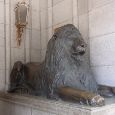 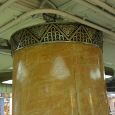 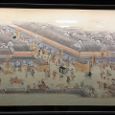 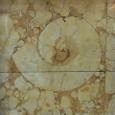
⑤ ⑥ ⑦ ⑧
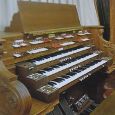 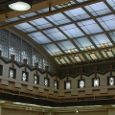 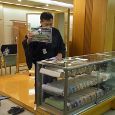 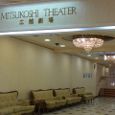
Takatoshi Mitsui and Echigoya
The origin of Echigo-ya is derived from a samurai named after Takatoshi Mitsui's grandfather named Echigo Mamoru, despite the appearance of Ise Matsuzaka.
"Sold in front of the store", "No current silver price", "Sold with small rifts (cut selling)"
Japan's first three-piece set
Escalators, sprinklers, heaters
Lion statue
Made of bronze, imitating a lion statue in Trafalgar Square in London, established in 1914.
Subway "Mitsukoshimae Station"
Opened the Tokyo Metropolitan Subway, which had been struggling with funds while aiming to extend to Shimbashi.
A statue of a heavenly woman (a bird's-eye view from the 3rd floor is recommended)
An image that symbolically expresses the basic philosophy of our customers "true heart"
Established in 1960 as part of the 50th anniversary project of Mitsukoshi Co., Ltd.
A 11-meter-high wooden sculpture made of cypress wood that is said to be 500 years old using steel frames.
Pipe organ
Pipe organ for theaters manufactured by Ulitzzer, USA, which was established in 1935.
Unlike a church-installed pipe organ, it can play music of a wide range of genres.
The only surviving pipe organ in Japan in the early Showa period (Kumin Tangible Cultural Property)
Kimono sales floor
On the day of the event, the following lecture will be given on the "special floor" of carpet curtains.
・Important Intangible Cultural Property & UNESCO Intangible Cultural Property Registered "Jofu"
・"Maki glue" technique by Yuzen dyeing writer Osamu Sakai
Hajimeteno Cafe
New opening this spring
A concept shop that supports active living by arranging things and things that you meet for the first time, centered on cafes.
|
Links
|
"Tsuyu no Satosaki" is the title of a novel that reminds me of this time. The author is Kafu Nagai (1879-1959). Kafu says, "The title of the novel is too elaborate, it doesn't matter if it's too elaborate," but it's exactly a wonderful title. (Masashi Sada has a song with the same name, but the title of this novel may have been in my head.)
In May 1915 (1915), Kafu moved from his late father's house in Yochomachi to a rented house at 1-6 Tsukiji, Kyobashi-ku (currently 2-7 Tsukiji). The second floor was 10 tatami mats and 6 tatami mats, the lower floor was 8 tatami mats, 6 tatami mats, and 3 tatami mats. The rent was 26 yen, and there was a residence of Kiyoharu's teacher Umekichi next to the back. In September of the same year, he moved to her in 9-chome, Sojuro-cho (currently Ginza 7-5) to live again with the divorced geisha Yaeji (later Seiju Fujikage).
a new house "Shikikan" was completed on a leased land on a cliff at 1-6,beicho, Azabu-shi, and will leave Tsukiji.










